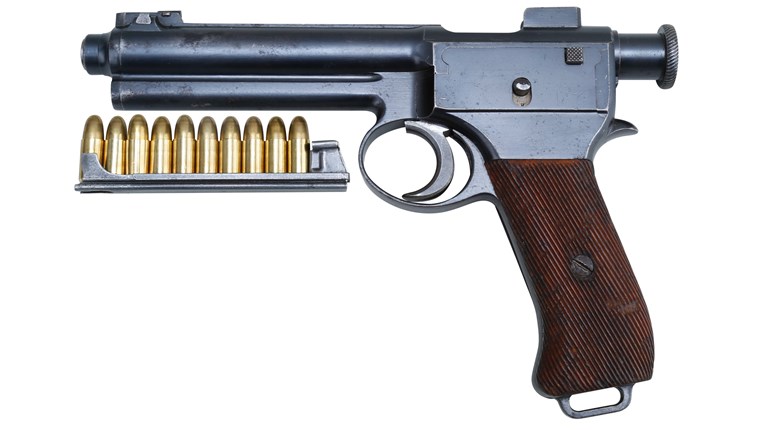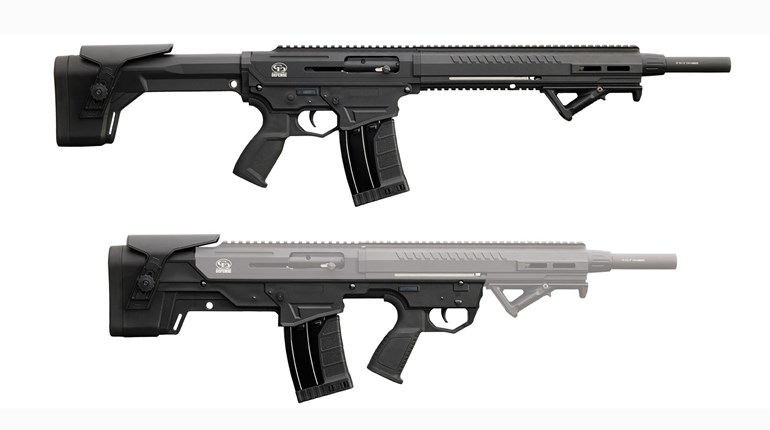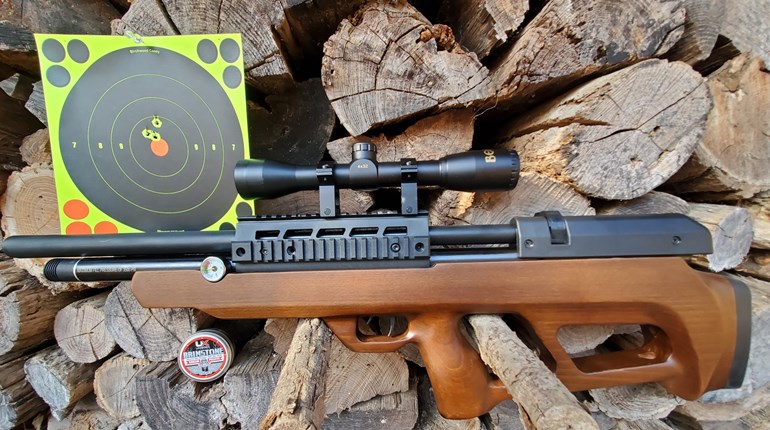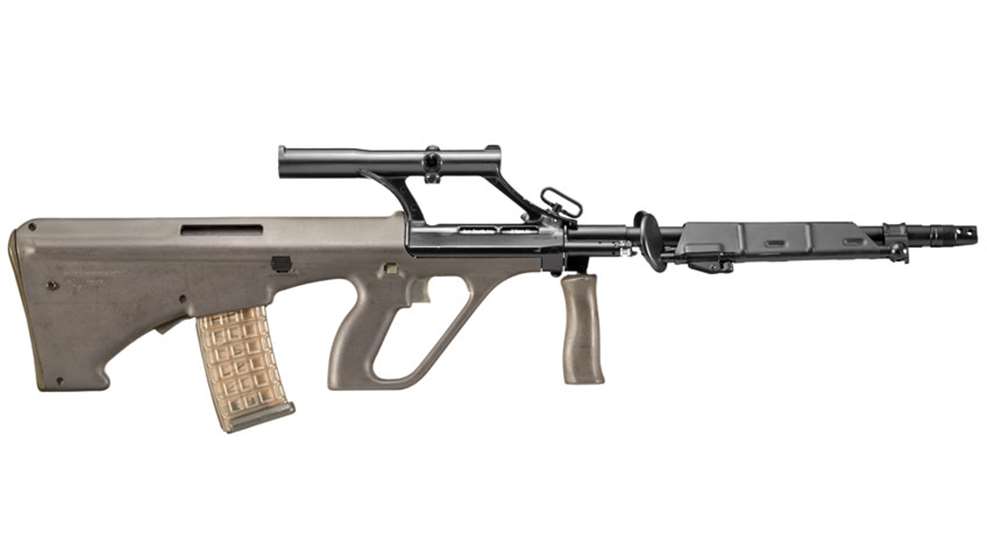
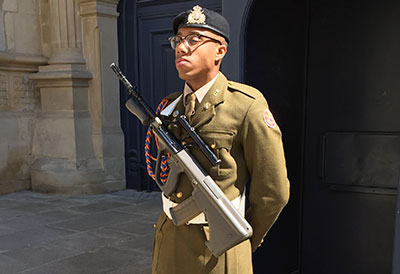
The palace on the Rue du Marché-aux-Herbes in Luxembourg City is one of three Grand Ducal residences in the country and it presents an impressive appearance. A representative democracy, Luxembourg is the world’s only remaining Grand Duchy and the current reigning constitutional monarch is Grand Duke Henri. When he is in residence at the palace in Luxembourg City, a sentry from the Army guards the main entrance. Although it numbers fewer than 500 members, the Lëtzebuerger Arméi is a modern and well-equipped fighting force that is, to this day, armed with a classic military rifle that dates back to the 1970s. That rifle can be seen in the hands of the Luxembourgian soldiers who stand guard at the Grand Ducal Palace whenever His Royal Highness Henri is in residence. That rifle is the venerable Steyr AUG—the most-successful military bullpup of them all.
In the late 1960s, Austria began to consider replacing its StG.58 service rifle—a domestically produced version of the FN FAL. In keeping with the general trend sweeping through so many of the NATO-member nations at the time, the objective was to retire the old 7.62 NATO battle rifle and adopt a more-modern design chambered for the 5.56 NATO cartridge. By 1974, Steyr had created a prototype bullpup combining the rotating bolt of the AR-15 with the dual guide rods and short-stroke gas piston of the AR-18. It was built on an aluminum receiver with a polymer action housing and a fire-control group with polymer components.
Three years later, the rifle that went to field trials notably included a quick-change barrel, a folding vertical foregrip and integral 1.5-X optic. In lieu of a fire-control selector, the rifle incorporated a progressive trigger providing semi-automatic fire with a shallow pull and full-automatic fire with a deep pull. It fed from a proprietary, polymer, detachable-box magazine with 30-round capacity that was at first transparent, but then translucent in full production. The Bundesheer (Austrian Army) officially adopted the new rifle in 1978 as the StG.77 and it swiftly demonstrated itself a design to be reckoned with.
Several features contributed to the AUG’s rapid success. First of all, an adjustable gas system with three settings (off, normal and adverse) meant reliability. Second, the bullpup anatomy made for a compact weapon ideal for mechanized and airborne forces. In addition, the 5.56 NATO cartridge made it remarkably controllable when firing in full-automatic mode. Finally, the gun’s modularity meant that it was adaptable, and that would end up giving the AUG respectable longevity. It would eventually be turned into a 9 mm submachine gun and even an open-bolt, squad-automatic weapon with a bipod mounted on a 24.4-inch heavy barrel.

Although initially equipped with a 1:9-inch twist barrel, it would eventually be equipped with the 1:7-inch rifling optimal for stabilizing 62- and 77-grain bullets. The AUG also made the transition to the era of the flattop upper with the A3 variant, which gave it the flexibility of mounting modern optics. Furthermore, the gun was designed to be ambidextrous, but a dedicated left-side ejecting bolt is necessary to make that work. The versatile and dependable AUG’s incomparable reputation eventually led other countries to adopt it. Australia, New Zealand, Ireland, Tunisia, Saudi Arabia and, of course, Luxembourg were among the nations that placed orders for this alien-looking firearm.
For all its success as a military firearm though, the AUG has also been a well-received civilian semi-automatic. It all started with direct import of A1 variants made by Steyr in Austria, but the 1989 import ban put an end to that. Then in 1997, Steyr began exporting the Universal Sport Rifle (USR), which was a 1994 “Assault Weapons Ban” compliant A2 version of the AUG, but that was terminated by executive order after only 3,000 examples made it into the country.
Domestic production of an AUG clone began in 2007 and continues to this day in Alabama. Thus after more than 40 years, the rifle is still alive and well. While other bullpups like the SA80 and the FAMAS have also served military forces, they just can’t compare to the widespread popularity of the Steyr AUG (although the IWI Tavor is giving it a run for its money). It is a gun that was ahead of its time and it influenced later designs like the P90, the F2000 and even the SCAR. Considering the era in which it was developed, the AUG wasn’t just a rifle—it was a prophecy.













